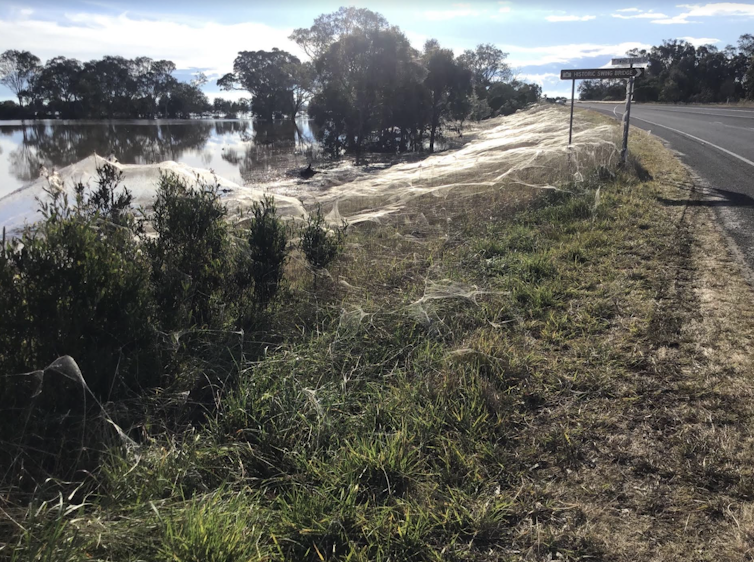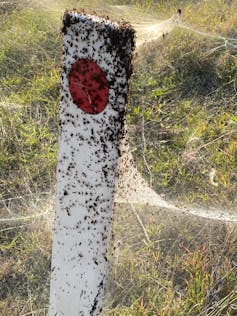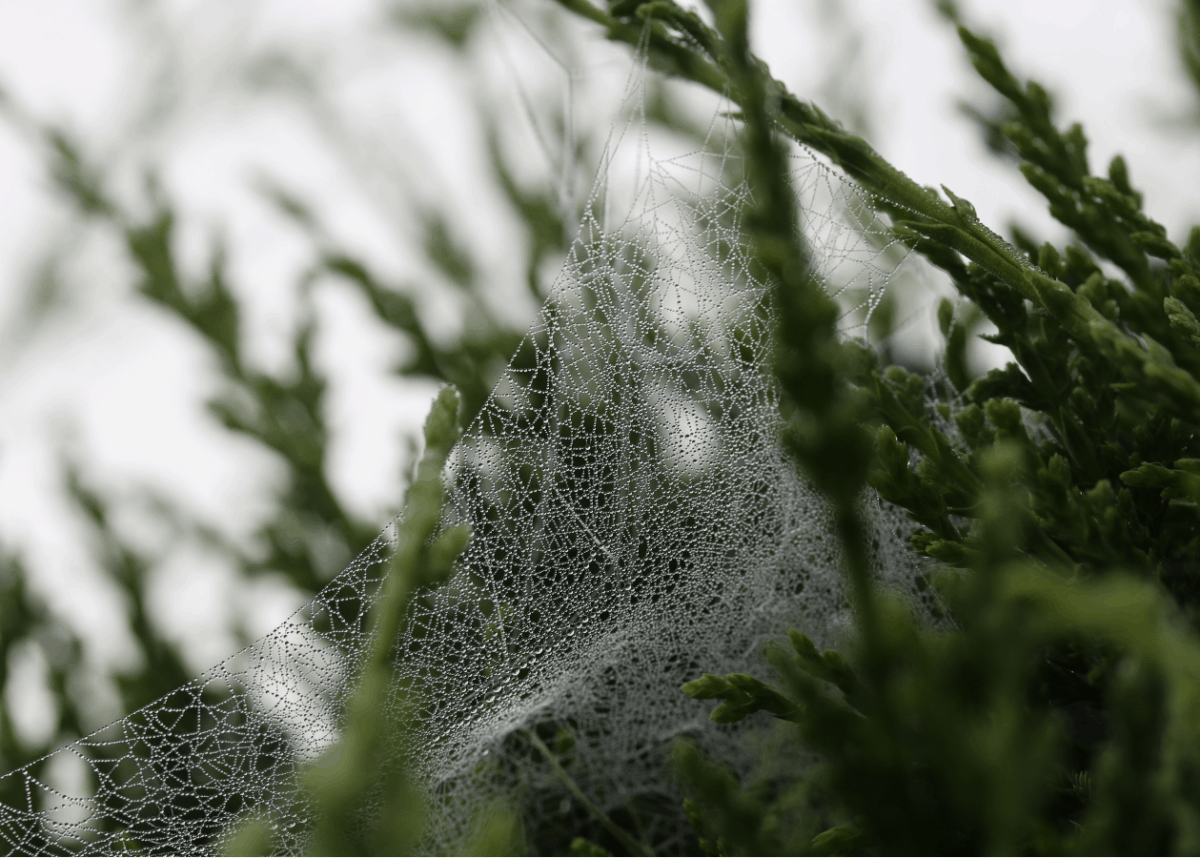Lizzy Lowe, Macquarie University
Stunning photographs of vast, ghostly spider webs blanketing the flood-affected region of Gippsland in Victoria have gone viral online, prompting many to muse on the wonder of nature.
But what’s going on here? Why do spiders do this after floods and does it happen everywhere?
The answer is: these webs have nothing to do with spiders trying to catch food. Spiders often use silk to move around and in this case are using long strands of web to escape from waterlogged soil.
This may seem unusual, but these are just native animals doing their thing. It’s crucial you don’t get out the insecticide and spray them. These spiders do important work managing pests, so by killing them off you would be increasing the risk that pests such as cockroaches and mosquitoes will get out of control.
Using silk to move around
What you’re seeing online, or in person if you live locally, is an amazing natural phenomena but it’s not really very complicated.
We are constantly surrounded by spiders, but we don’t usually see them. They are hiding in the leaf litter and in the soil.

When these flood events happen, they need evacuate quickly up out of holes they live in underground. They come out en masse and use their silk to help them do that.
You’ll often see juvenile spiders let out a long strand of silk which is caught by the wind and lifted up. The web catches onto another object such as a tree and allows the spider to climb up.
That’s how baby spiders (spiderlings!) disperse when they emerge from their egg sacs — it’s called ballooning. They have to disperse as quickly as possible because they are highly cannibalistic so they need to move away from each other swiftly and find their own sites to hunt or build their webs.

That said, I doubt these webs are from baby spiders. It is more likely to be a huge number of adult spiders, of all different types, sizes and species. They’re all just trying to escape the flood waters. These are definitely spiders you don’t usually see above ground so they are out of their comfort zone, too.
This mass evacuation of spiders, and associated blankets of silk, is not a localised thing. It is seen in other parts of Australia and around the world after flooding.
It just goes to show how versatile spider silk can be. It’s not just used for catching food, it’s also used for locomotion and is even used by some spiders to lay a trail so they don’t get lost.
Don’t spray them!
The most important thing I need readers to know is that this is not anything to be worried about. The worst thing you could do is get out the insecticide and spray them.
These spiders are making a huge contribution to pest control and you would have major pest problems if you get rid of all the spiders. The spiders will disperse on their own very quickly. In general, spiders don’t like being in close proximity to each other (or humans!) and they want to get back to their homes underground.
If you live in Gippsland, you probably don’t even need to clear the webs away with a broom. There’s no danger in doing so if you wish, but I am almost certain these webs will disperse on their own within days.
Until then, enjoy this natural spectacle. I wish I could come down to see them with my own eyes!
Lizzy Lowe, Researcher, Macquarie University
This article is republished from The Conversation under a Creative Commons license. Read the original article.












